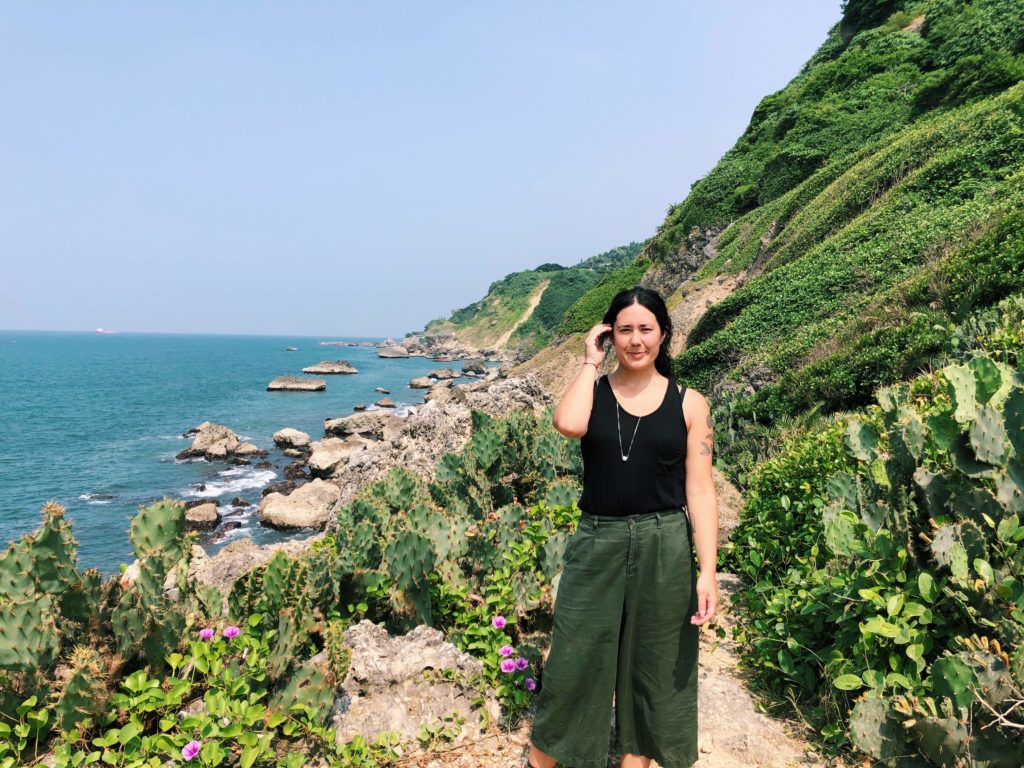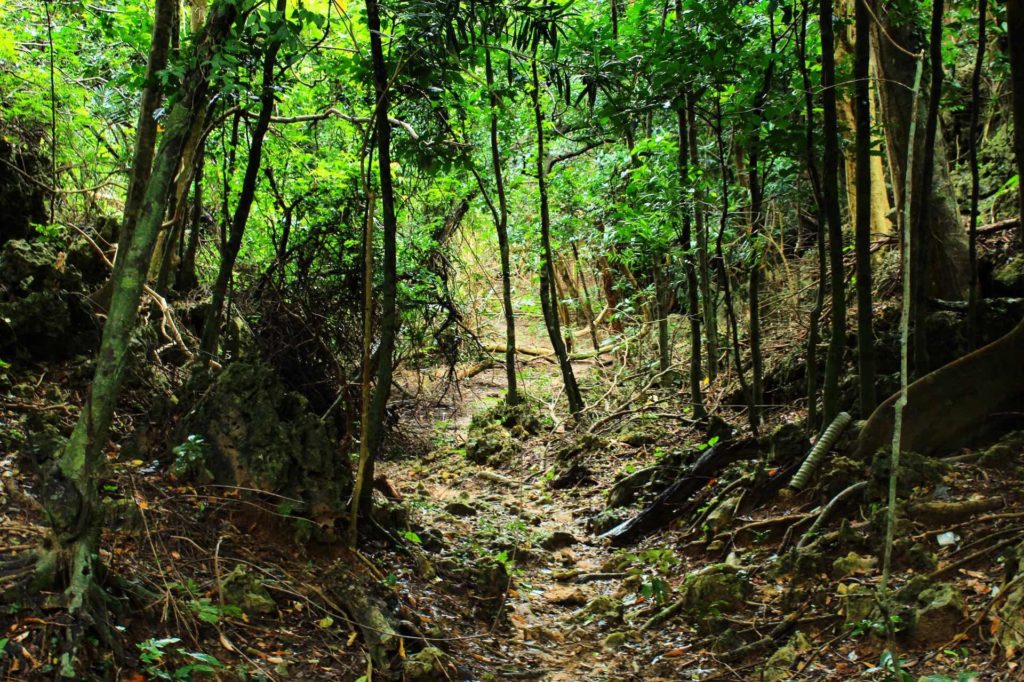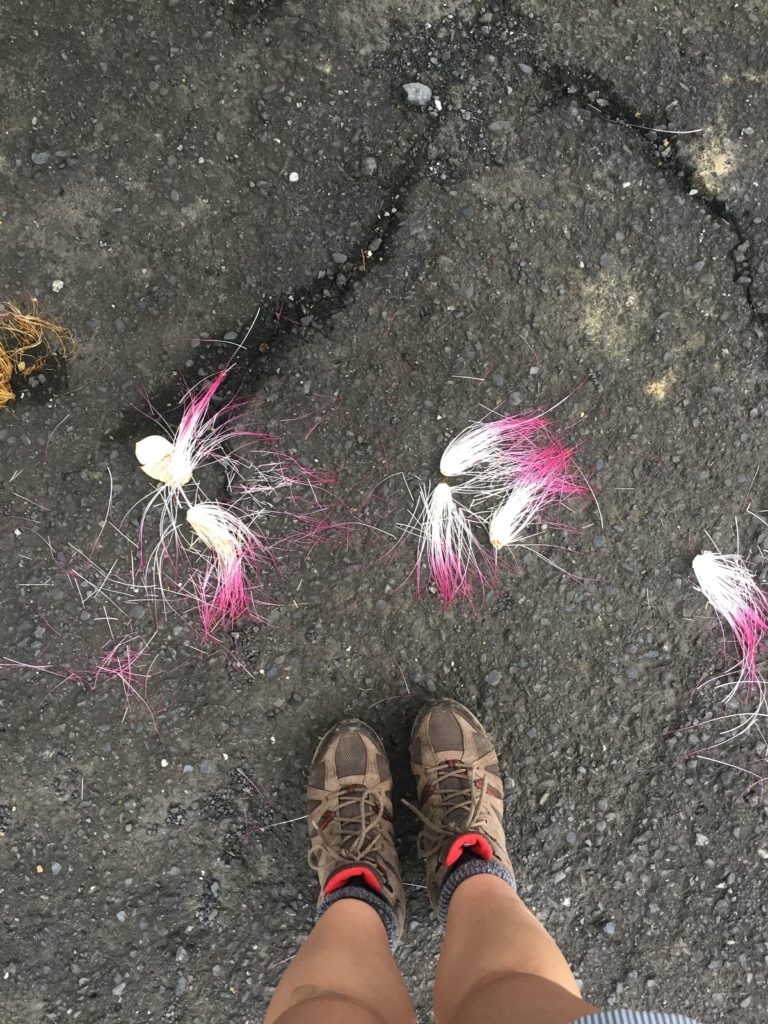When Jessica J. Lee first first started hiking in Taiwan, she knew little of the island’s plantlife. Here, she learns Mandarin plant names from her mother, as the two wander Taiwan’s hills.

The bajiao stood at the end of an orchard field neighbouring the cemetery. Its leaves were broad and glossy, pale green in the hot light. No other trees like it grew nearby; in the orchard, only dragonfruit cactuses grew, their fruits pink and wrapped in plastic. I thought the bajiao looked lonely.
‘What is it?’ I asked my mother.
《芭 蕉》she replied.
Bajiao. I stretched its shape into my mouth, and then asked again what the tree was.
‘False banana,’ my mother concluded in English. She then turned her attention to the cemetery, where my grandfather’s ashes had been interred four years earlier.
*
The 芭 蕉 was the first plant she taught me in Taiwan. Musa basjoo, a small tree bearing inedible bananas. Surely I had seen it in Europe or North America—in garden centres and ornamental displays—but in its field in southern Taiwan, it seemed foreign to me. I felt foreign, too, though my mother had been born and raised there.
My mother had taught me at a young age to pay attention to plants. There were plants I knew well, temperate plants that grew in the places I visited often: heather and gorse, Scots pine and plane trees. Theirs was a language I spoke. When we reached Taiwan—a place I had long imagined but never known well—I felt more inarticulate than ever.
My grandfather was the first plant lover among us. At least, that’s what I know for sure; perhaps he learned from his parents or grandparents back in China. He kept a small garden during my childhood and tended to the curling bonsai tree that grew in the dining room. My mother once told me that when he’d first moved to Taiwan at the end of the Chinese civil war, leaving his family and past behind him, he’d planted banana trees in his garden. He’d needed urgently for something to take root.
*
We took a taxi into Kaohsiung, where my mother was born and my grandfather had died, and from the window my mother pointed to another new name: 鳳凰木 (fenghuang mu). She translated it literally: the phoenix tree.
The phoenix tree stood near ten metres tall, casting an umbrella of shade onto the busy sidewalk. Sprays of feathery green leaves hung from its crown, with scarlet flowers laced among the branches. I took a photograph and wrote out its name as my mother had pronounced it.
Hours later, I looked up ‘phoenix tree’ but could find nothing of the red-flowered city tree I had seen. I asked my mother to help me type its name in Chinese characters, and only then could I find it, backtracking from the Chinese Wikipedia entry to the tree’s English entry: Delonix regia, often called ‘royal poinciana’. Once I’d learned its name, I began to see the phoenix tree everywhere.

I wondered then how my mother could remember all these names: she had emigrated from Taiwan forty years earlier, settling in southern Ontario, where I was born. The plants she saw often in her life in Canada had little in common with the brimming tropical hues that burst from the verges in Taiwan. But I realised how much she must have missed this overflow of life. How the winter—with six months of snow and bare branch—must have pained her.
Seeking green, my mother and I ventured to the southern tip of the country, where a waterfall with seven pools spun from the foothills into a coral plateau. At their base, we found another lone tree. It grew at the end of a rutted lane watched over by kind stray dogs. The tree’s trunk was dusted with grey and gold lichen, but its rounded leaves shone bottle green. Amongst them hung fine filaments of white and pink, paint-brush-like flowers bursting forth in huge clusters. Where the blooms had fallen back, pale green box fruits hung heavy.

This was a tree we both had to look up: 玉蕊 (pronounced ‘yurui’). The ‘jade stamen tree’ or Barringtonia asiatica. Together, we memorised its name, then studied its past: like my family, the tree was considered curiously as both introduced and native to Taiwan.
The yurui had travelled here by sea: a migrant tree, its sturdy green fruitfloats until it reaches new shores. Coconuts, for example, do much the same. Travelling the southern sea, they can remain afloat for up to fifteen years.
But eventually washed ashore in a new place—some distant home—the yurui tree takes root.
*
Jessica’s second book, Two Trees Make a Forest: On Memory, Migration and Taiwan, published tomorrow by Virago, is our Book of the Month for November. Buy a copy here.
Jessica reads at two of our upcoming Arts Council-funded events later this month – with The Willowherb Review in Todmorden on 20 November, and with Amy Liptrot the following day in Huddersfield. More information/tickets here.